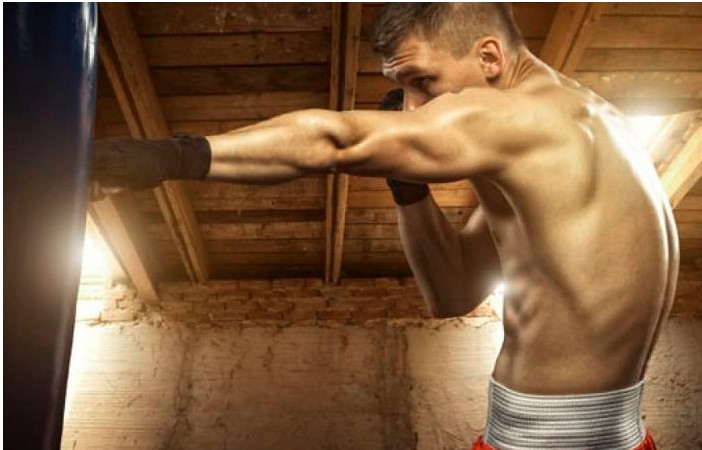know the muscles that are involve while hitting a heavy bag work A punching bag, often known as a heavy bag, is an excellent piece of training equipment. This tried-and-true boxing tool has helped mold numerous champions in the ring, and it remains an essential feature of any boxing gym.
Previously only available to boxers and MMA fighters, this iconic and effective piece of equipment has made its way into popular training facilities, proving to provide a high-intensity boxing workout to those who use it.
Heavy bag sessions are rigorous, high-energy workouts that provide boxers the results they want quickly. A heavy bag is a wonderful supplement to an existing exercise regimen, or you can build your whole training program around it.
While the apparent benefit of using a heavy bag is to practice punches and kicks, it also has a myriad of benefits that you may not be aware of. Workouts with a heavy bag enhance technique, develop power and strength, improve balance and coordination, and reduce stress. For these very reasons heavy bag exercises are ideal not just for the pros, but for anyone trying to enhance their physical fitness.
To answer the question at hand, all of the major muscle groups — arms, shoulders, chest, back, legs, and core – are activated when you train with a heavy bag, making it an effective full-body workout. Most people assume that boxing only utilizes upper body strength but in fact boxers use their entire body starting from the toes and up to the fists to deliver hard hitting and rapid blows.
Arms and Shoulders
Although a good punch demands full-body muscular coordination, the most visible muscles you engage during a bag session are your arms and shoulders. Straight punches like jabs and crosses primarily transfer force via rotation of the punching shoulder, which is controlled by your subscapularis, supraspinatus, infraspinatus, and teres minor muscles.
Power is produced by rotational momentum from the triceps and biceps muscles, thus wider punches like hooks and uppercuts rely less on core strength. When utilizing a speed bag, the steady stream of arm punches is very helpful for exercising and conditioning the triceps and biceps.
Core
Strengthening muscles across your vertical body core, including the neck, chest, and abs, may be achieved by training with either a speed bag or a heavy punching bag. When you throw a power punch at the heavy bag, you primarily use your pectoralis major and minor chest muscles, as well as your upper and lower abdominal muscles, to produce force.
Your deltoids, lats, and traps must all work together to return your arm to the ready position. By optimizing the angles at which you flex and expand your abs, throwing hooks and body-level punches from various arm angles adds variety to your core exercise.
Punching a speed bag keeps your abs and pecs engaged as you keep up with the bag’s rhythm. Because you must extend and flex each muscle group at a steady tempo to strike the bag in rhythm, this continual engagement results in isometric, or symmetrical, muscular training.
Both types of bags provide your neck a good workout, as the punching motion regularly flexes and expands the omohyoid and sternohyoid muscles.
Legs
Your leg muscles must contribute significantly to proper power-punching technique with Heavy bag workouts. When you push off from the canvas with your legs and pivot to transfer rotational force through your core, you begin to rotate your body and generate power.
Your calves and quads are among your strongest leg muscles and the most important lower body muscles for generating initial force.
In addition to the strength training you get from moving around the bag, learning appropriate footwork and engaging in defensive boxing motions like ducking and slipping improves your lower aerobic and strength conditioning significantly.
During bag drills, keeping your legs in constant motion improves stamina and is especially beneficial for toning your calves, quadriceps, and hamstrings.
Thus, we can see that bag drills work your entire body muscles, effectively being the best workout for anyone whether a professional fighter or someone just trying to get into shape. To add a heavy bag and a pair of boxing gloves to your training routine today, click here.

